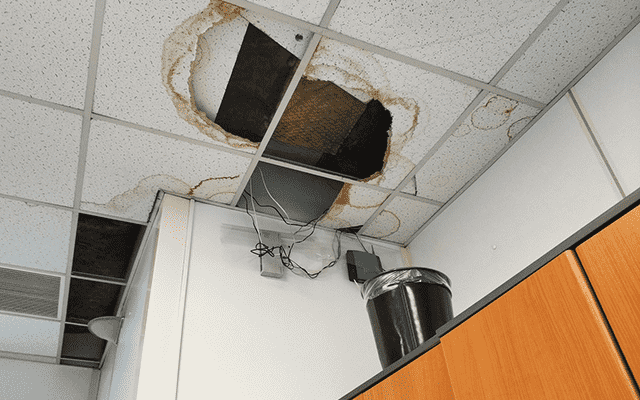Construction of a building is done in such a way to prevent leaking and to keep the outside elements from getting in, but no roof system is flawless. Eventually, regardless of how high-quality your materials are and how well your installation is done, your flat roof is bound to leak. Integrity or leak detection is a process that helps identify weak points in your roof where leaking is most likely to occur, and with this information, you can strengthen or repair accordingly before major damage is done.
The main integrity tests include flood, spray, high voltage, and low voltage. High and low voltage testing falls into the subcategory of electronic detection, which is generally far more accurate. We’ll discuss each briefly as well as the pros and cons of each below, so you can decide which option is right for you.
Flood Testing
Flood testing involves temporarily sealing any roof drains and purposely flooding the roof with water, usually with a depth of around 2” for a day or two. The inside ceiling directly under the roof is inspected regularly during this time for any signs of leaking.
This is a simple integrity test that often shows the general location of any weak spots, but exact locations will still need to be found visually or with other detection methods. The weight of the water can also be an issue if it exceeds the building’s load capacity, which is common if any portion of the roof slopes at a rate greater than a ¼” every foot. For bigger slopes, a significantly larger volume of water is required, the weight of which can quickly add up and become dangerous.
Lastly, getting the water off of the roof is not as simple as opening the roof drain, as severe flooding can damage drainage pipes and cause flooding inside your building. This may be a simple leak detection method, but it can also lead to headaches and may still require further testing.
Spray Testing
Spray testing involves spraying dedicated roof areas with water to simulate regular or extreme weather conditions. The wind is also simulated, and for a period of several hours during the “storm,” the interior ceiling below the roof is inspected for leaks.
This is another fairly simple test, but this one can pinpoint any areas that are leaking. However, this method requires that the roof be tested in small pieces systematically beginning at the lowest point of elevation. This ensures that a leak at a lower elevation isn’t missed simply because run-off isn’t strong enough to make the leak apparent on the interior of the building.
This leak detection method requires a large amount of time spraying and inspecting, as each area can take several hours to test properly, but it does work well for roofs where flood testing is impractical due to roof shape or material.
High Voltage Testing
High voltage testing involves “brushing” the roof area with a charged broom, which is connected to a grounded power source. The theory behind this method is that the electrical circuit between the power source and the metal broom will only be completed by moisture beneath the roof membrane in the building material or insulation. A completed circuit triggers an audible noise which will alert the technician to a confirmed leak.
This leak detection method is highly versatile and extremely accurate, it can be used to test vertical membrane surfaces, and it can even detect weakened areas of the roof that haven’t begun leaking heavily yet. Click here to learn more about the benefits of this method and how it can detect issues other methods are unable to uncover.
Low Voltage Testing
Low voltage testing is similar to high voltage testing in that it uses moisture to complete a circuit between two pieces of equipment, in this case, a grounded power source and an exposed wire. The roof is then covered in a thin layer of water to create an electrically charged surface, and leaks in the roof allow water to enter which will complete the circuit.
This leak detection method also relies on an audible sound once the circuit is completed, but it can give false positives, which means the technician needs to have the experience to confirm that the alert was caused by a leak. The roofing materials can also play a big part in false positives or even missed leaks, so additional testing may be required.

